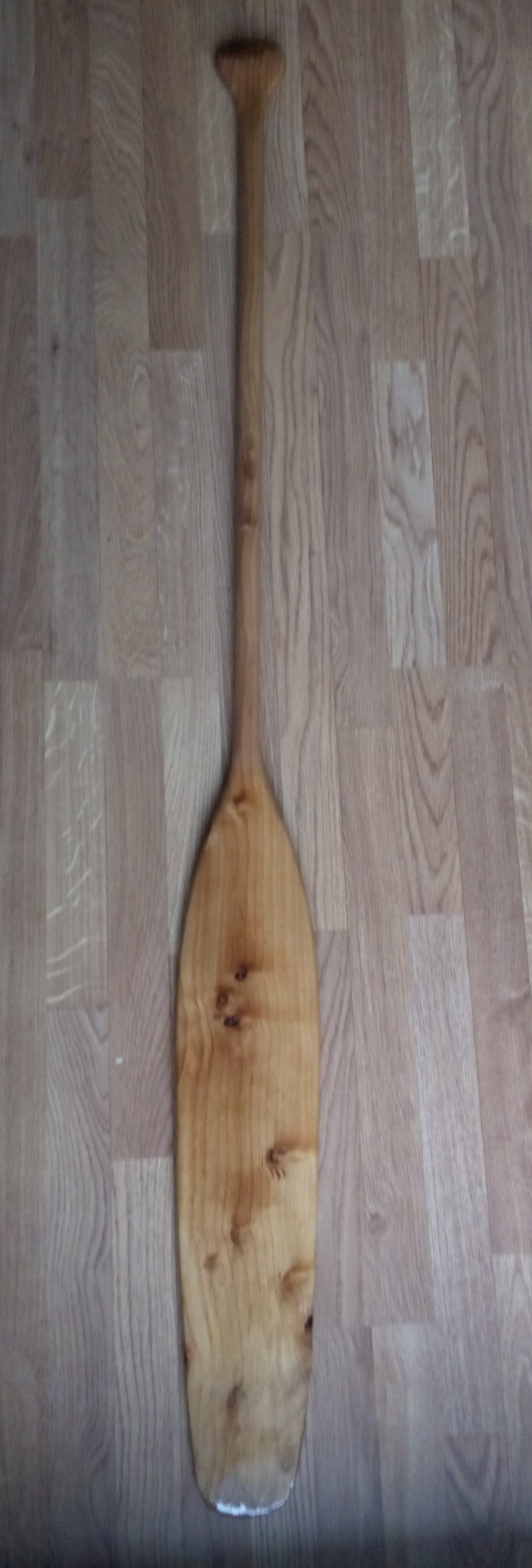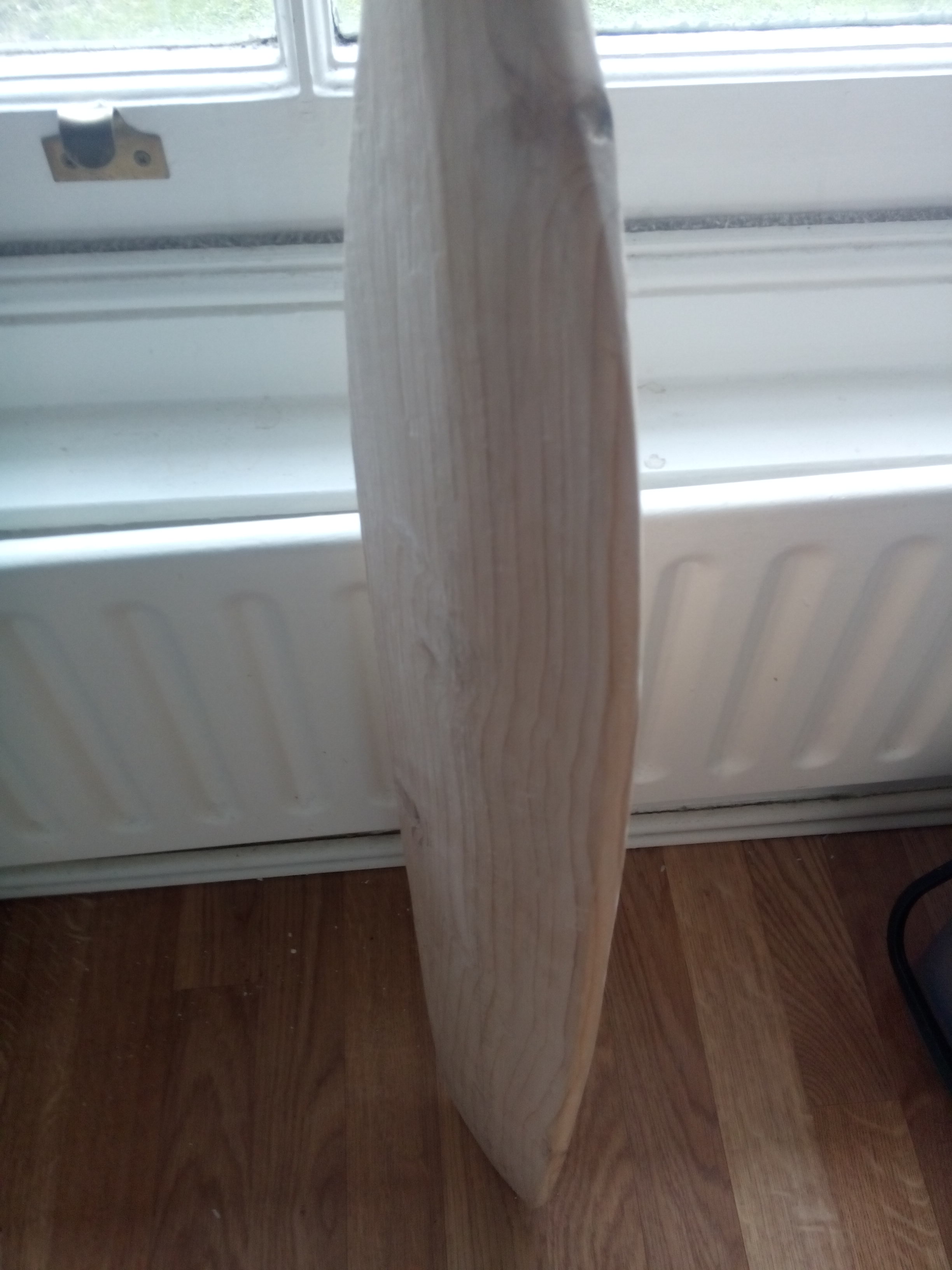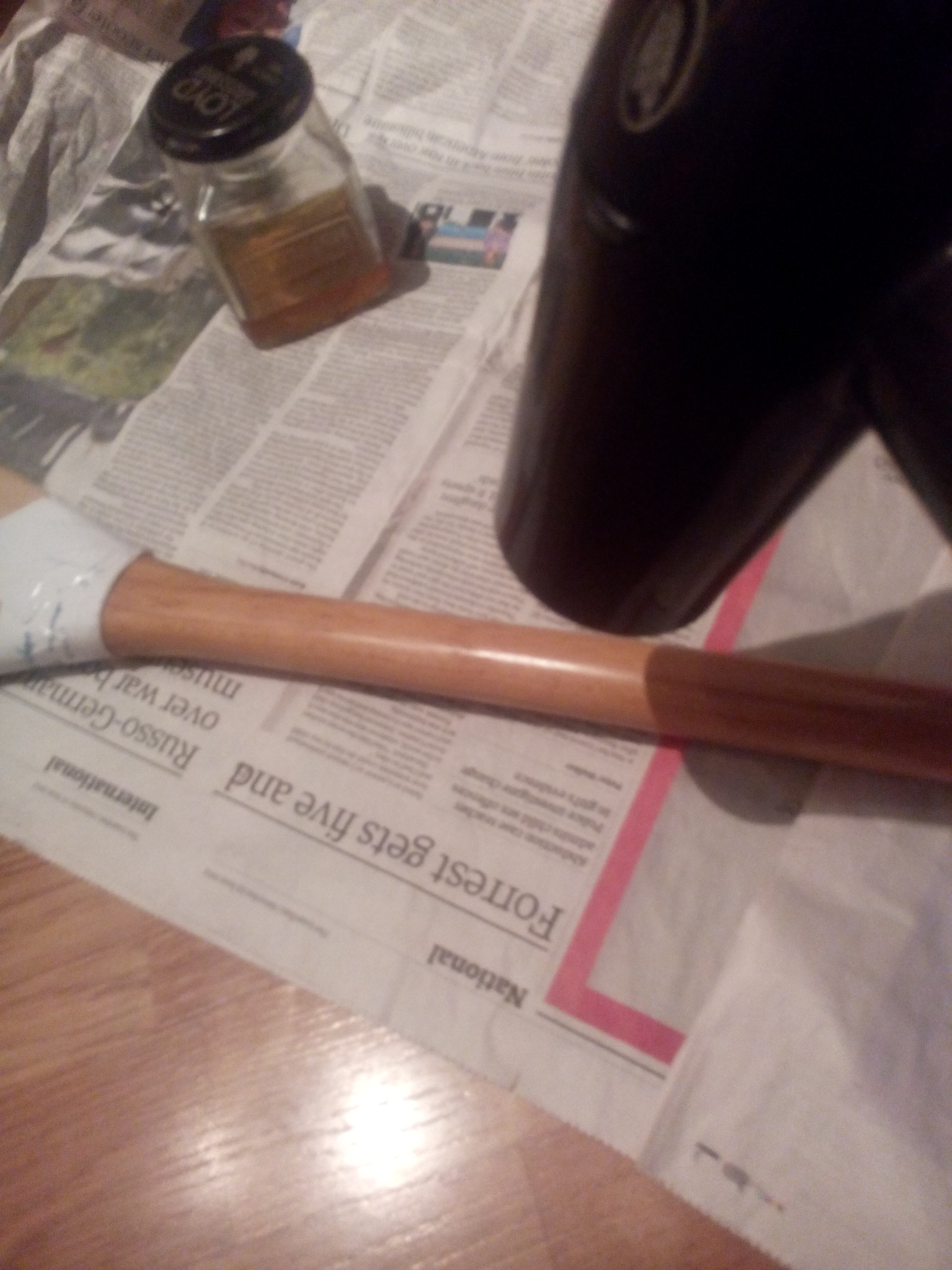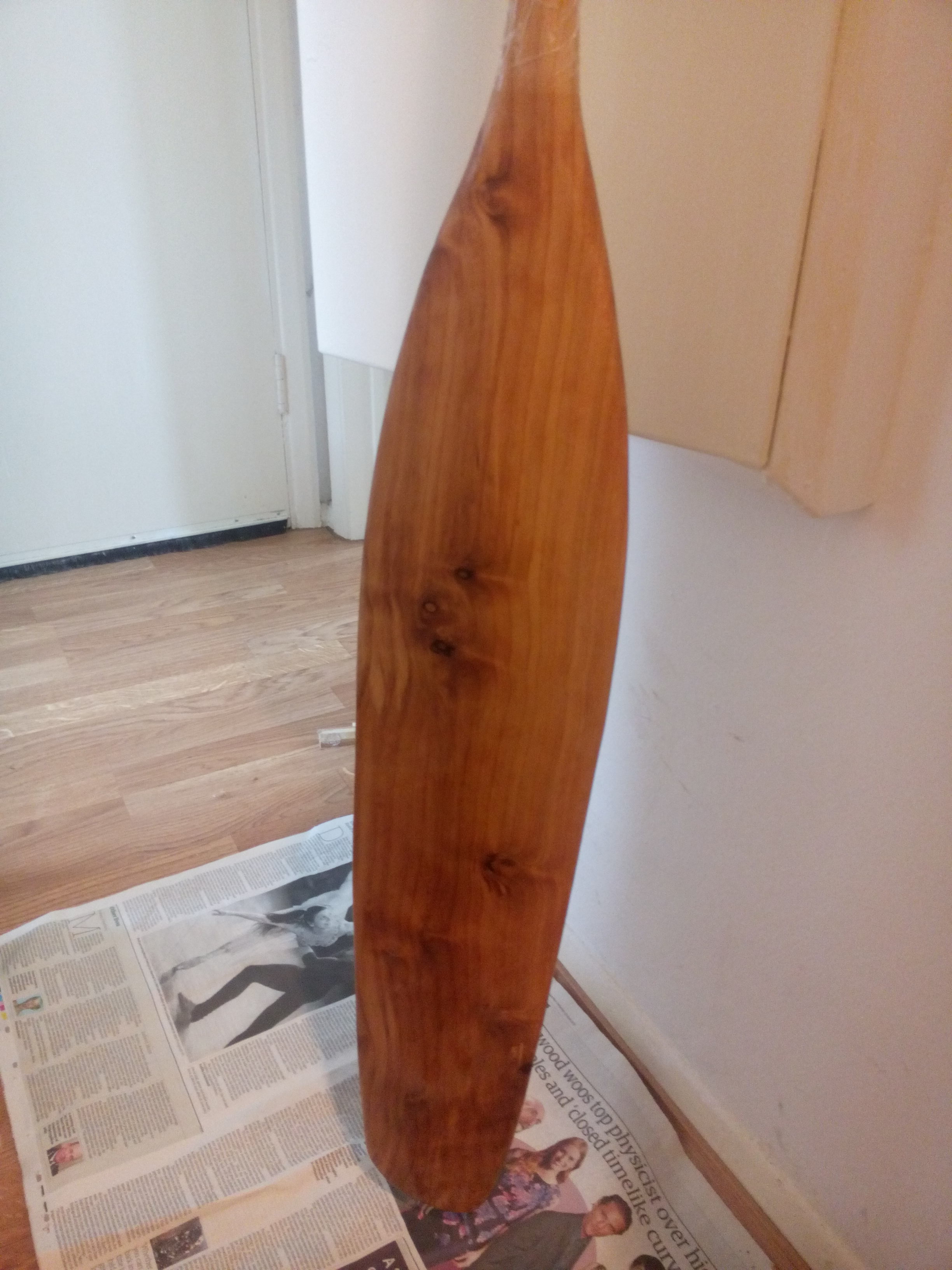A while ago I was kindly given some planks from a Cedar of Lebanon tree in Kent. This very old tree had come down many years ago in a storm, and had been milled and the seasoned planks had been gathering dust. They were thick enough and long enough for canoe paddles, so I decided to go ahead and give it a go. The grain was fairly straight down the plank, but there were a fair number of knots, so avoiding them in crucial places wasn’t easy. It is best to position them out of the shaft and away from the edges of the blade – those in the centre of the blade can be filled and just add figure.
It is also a good idea to use the straightest grain in the shaft – avoid, if it is possible, grain lines that run out of the side of the shaft – especially at the throat, where the shaft meets the blade.
The greatest unknown was the wood. Although you might know of cedar as a very good – and popular – wood for canoe paddles, this is almost always Western red cedar (thuja plicata), which is not a true cedar, unlike Cedar of Lebanon (cedrus libani). I could find nothing online about using cedrus libani for canoe paddles.
This is the plank laid out with a paper pattern of an ottertail design. The design is pinned to the plank, and moved around to find the best spot.
The shape I cut out with a jig saw – my one concession to power tools.
Use a plane and draw knife (or surform) to get down to your precise outline shape, and ensure that your edges are dead square to the faces of the paddle. Then it is important to give yourself very accurate centre lines on both faces of the paddle, and running around the edge. Then you can begin to mark lines to create an edge profile. I think I initially marked 1/2″ at the edge of the blade, which I would then thin down along the length of the blade to a tip of 1/4″; intially I planned an oval shaft one inch across and and inch and 1/8 deep, but it became rounded out as I worked.
This is a jig I rigged with a square level and some tape and a pencil to run a centre line, and then offsets from that centre. It did the job, just about. Wing dividers would be better.
Once you have your offsets from the centre, you can bring in angled lines to form the profile. Another, simpler way to do this, is to make the width at the throat (where shaft meets blade) and then at the tip, and draw straight lines between.
Once you have these lines, you can carefully saw stop-cuts down to close to these lines, and then using a very sharp axe or chisel, chip out these sections. It is best to do all this while leaving the edges completely square if you can.
This will shape the profile from shaft to tip of your blade, then you need to shape from the spine of the blade out to the edges, making the edges thin enough that they’ll slice the water, but not so thin they’ll chip easily.
The shaft should be shaped by knocking the corners off from square to octagon, then knocking those corners off, to try and keep the reference points of the corners. Then you can task a rasp to the remaining corners.Leave plenty of wood at the throat, where the most stress goes through the paddle. Once it is nearly oval it can be ‘shoe-shined’ with coarse sandpaper to finish the shape. The shape of the grip is entirely up to you.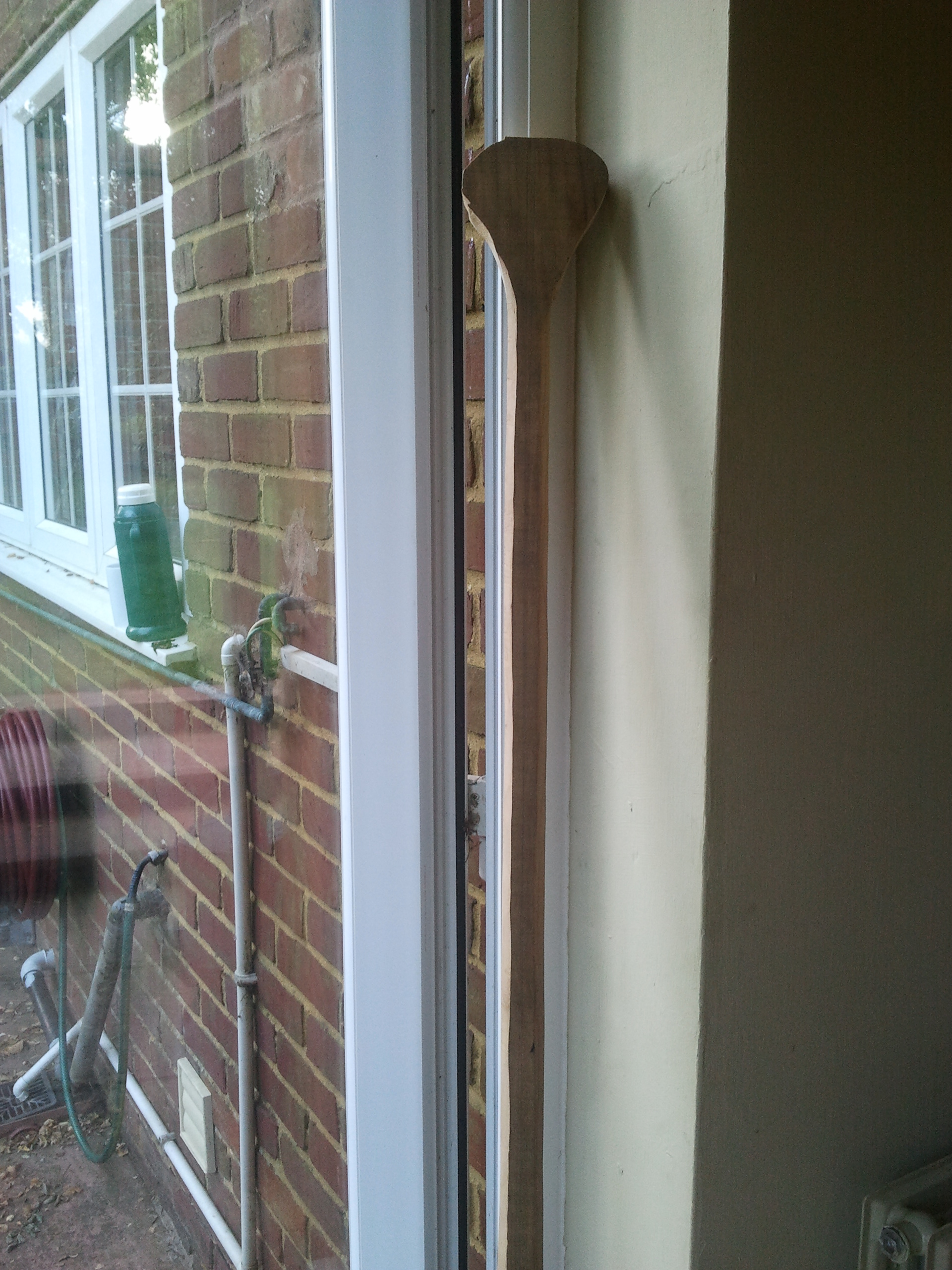
Unfortunately, I then forgot to take more photos, until this one of a paddle nearly finished shaping. This still needs some weight taking off the wings of the blade, but gives an idea of the shape.
Once you have got the shape sand up through the different grits of sandpaper. This is the really fun part as everything smooths out and the wood starts to really show up. It is worth going for a very smooth finish, especially if you are oiling the paddle. After your last sand, damp the wood to bring up the grain, then sand again.
Finishes are argued about by paddle-makers, it seems! But for my tuppence worth, unless you’re using a wood with good natural water resistance (elm, Western red cedar, black walnut), I would varnish the blade with several coats of good spar varnish, since it will be in the water the most. But for comfort, I prefer oiled wood from the throat up, since it is much nicer to grip, even when wet. So boiled linseed oil, or similar is what I advise. I used some masking tape to get a clear straight line between varnish and oiled shaft.
When you oil the shaft, drive the oil in to the wood by heating with a hairdryer. You can also use very fine (400 grit) sandpaper to create a fine sawdust-oil slurry that will also penetrate the pores, in the same you do with water stones when sharpening knives. Wait for it to dry, and repeat. The result is a completely smooth waterproof shaft, without the slight tacky feel in the hand of varnish.
Here is the paddle drying from a coat of varnish, suspended by the grip. The figure in wood is really brought out by the finish.
And here is a photo of the finished paddle (paddles aren’t easy to photograph!). 